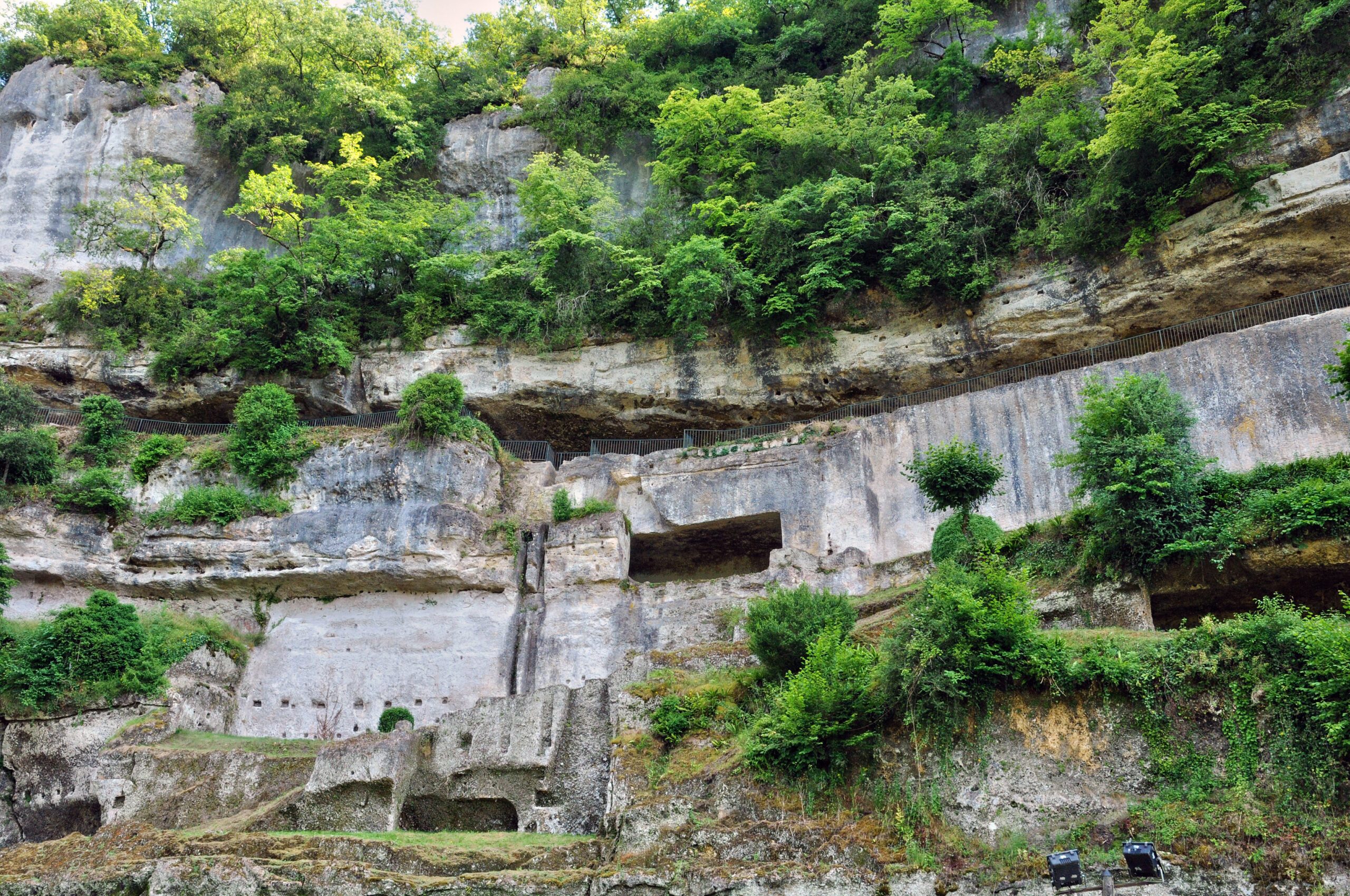Discover the Dordogne
The emblematic places of Périgord
Domme, between earth and sky
A vertiginous bastion! Founded on a cliff above the river, Domme was built as a bastide in 1281 by Philippe III le bold. The ramparts that surround it, pierced by three gates, do not take offense at the steep relief, they adapt to it with remarkable ease for fortifications of such thickness. Prowess again! Inside, its blond stone houses offer a pleasant walk to its heart, the Place de la Halle, where a traditional market takes place every Thursday organized around a magnificently renovated 17th century hall.


Sarlat, the beautiful awakening
Sarlat knows how to dazzle. The blond stone of its buildings too. This jewel, nestled between Vézère and Dordogne, has become the symbol of the Périgord way of life. The profusion of its heritage, rich in residences each more elegant than the other, testifies to the richness of its nobility from the 15th century.
Sarlat, the beautiful awakening
Sarlat knows how to dazzle. The blond stone of its buildings too. This jewel, nestled between Vézère and Dordogne, has become the symbol of the Périgord way of life. The profusion of its heritage, rich in residences each more elegant than the other, testifies to the richness of its nobility from the 15th century.

Les jardins de Marqueyssac
The site is exceptional: a rocky outcrop overlooking the Dordogne valley. This is where the gardens of Marqueyssac unfold around a castle whose first stones date back to the 17th century. The park offers an area of 22 hectares representing 6 kilometers of paths, bordered and adorned with more than 150,000 hundred-year-old box trees. Rockeries, waterfalls, green theaters and an impressive belvedere steeply 130 meters above the river complete the visit.


the perched villages of Beynac-et-Cazenac
Downstream from Sarlat, built on limestone cliffs, stands 150 meters above the river, one of the most spectacular castles in the Dordogne, the Château de Beynac-et-Cazenac. Legend has it that God distributing castles around the world saw the bottom of his bag burst above Périgord! From the top of its rocky outcrop, this stone vessel, a real architectural feat, has watched over the valley since the 12th century. It is surrounded by one of the most “most beautiful villages in France”, a town with very steep and roughly paved streets, lined with old houses with blond stones.
The village of La Roque-Gageac, a former port on the Dordogne, is another jewel of this golden perimeter. As if placed delicately along the shore, at the foot of a high cliff, the village benefits from a very pleasant microclimate which has earned it the nickname of “Little Nice of Périgord”. You can admire a flora that is quite exotic for the region, made up of oleanders, palm trees and orange trees…
the perched villages of Beynac-et-Cazenac
Downstream from Sarlat, built on limestone cliffs, stands 150 meters above the river, one of the most spectacular castles in the Dordogne, the Château de Beynac-et-Cazenac. Legend has it that God distributing castles around the world saw the bottom of his bag burst above Périgord! From the top of its rocky outcrop, this stone vessel, a real architectural feat, has watched over the valley since the 12th century. It is surrounded by one of the most “most beautiful villages in France”, a town with very steep and roughly paved streets, lined with old houses with blond stones.
The village of La Roque-Gageac, a former port on the Dordogne, is another jewel of this golden perimeter. As if placed delicately along the shore, at the foot of a high cliff, the village benefits from a very pleasant microclimate which has earned it the nickname of “Little Nice of Périgord”. You can admire a flora that is quite exotic for the region, made up of oleanders, palm trees and orange trees…

La Roque Saint Christophe, Font-de-Gaume
Lascaux is now only open to a few handpicked specialists, allowing only extremely rare privileges. For others, visits are prohibited, you have to turn to Lascaux 4 to get an overview of the cave.
If Lascaux is emblematic, the Vézère valley as a whole, adopted land of Neanderthals and Cro-Magnons, is full of traces of a distant past. To follow the Vézère from Les Eyzies is to discover the intimate link between the valley and prehistory. Profusion of Paleolithic deposits, rock shelters, decorated caves… On the road between Montignac and Les Eyziès, one site is emblematic: La Roque Saint Christophe, a one kilometer long cliff suspended above the Vézère and dug of shelters. Occupied by prehistoric man, its natural cavities were then fitted out, carved out in the Middle Ages, serving in particular as a refuge for the Huguenots, before being dismantled in the 16th century. Today it is the largest troglodyte complex in Europe.
One kilometer from Les Eyzies, you can discover one of the most important caves in the world, Font-de-Gaume, in the hollow of a cliff overlooking a valley. Bison with red horns, horses, reindeer, mammoths, enigmatic geometric signs… The some 200 works, paintings and engravings from the Magdalenian period (15,000 BC) have unearthed in 1901. Today it is the only polychrome decorated cave open to the public in the world.

